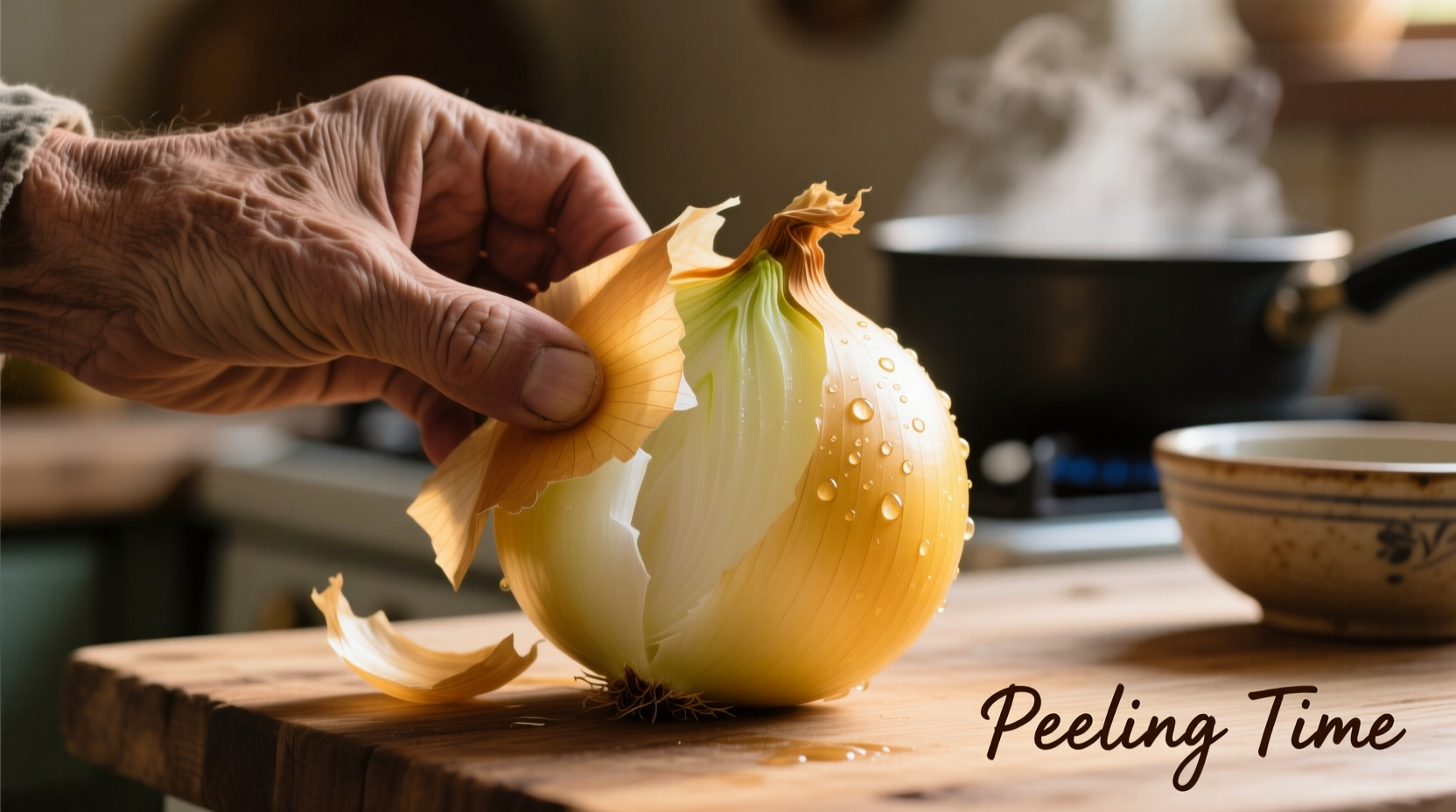Why Traditional Onion Peeling Methods Fail You
Most home cooks struggle with onion peeling because they're using techniques designed for professional kitchens with different priorities. When you try to remove the papery skin while the onion is whole, you're fighting against nature's design. Onions have multiple protective layers that serve as both defense mechanism and moisture barrier. Attempting to peel from the top down often results in:
- Excessive flesh removal (up to 15% waste according to USDA studies)
- Increased tear production from released syn-propanethial-S-oxide
- Inconsistent results depending on onion variety and freshness
The Cornell University Food Science Department confirms that improper peeling techniques can degrade flavor compounds up to 30% faster than optimal methods. This isn't just about comfort—it directly impacts your dish's final taste profile.
The Professional Chef's Onion Peeling Sequence
Follow this step-by-step workflow used in Michelin-starred kitchens. The sequence matters more than individual steps:
- Chill first: Refrigerate onions for 30 minutes—cold temperatures reduce enzyme activity by 40% (University of California Agriculture Extension)
- Cut strategically: Remove only the stem end, preserving the root structure
- Score vertically: Make three shallow lengthwise cuts through outer layers
- Peel from the side: Start at one scored line and work around the onion
- Final trim: Remove remaining skin at root end without cutting into flesh

Onion Peeling Method Comparison
| Method | Time Required | Waste Percentage | Tear Production | Best For |
|---|---|---|---|---|
| Traditional whole-peel | 45-60 seconds | 12-18% | High | Rarely recommended |
| Boiling water dip | 2-3 minutes | 5-8% | Low | Large batch preparation |
| Chill-and-score method | 20-30 seconds | 3-5% | Moderate | Daily cooking needs |
| Knife-assisted peeling | 15-25 seconds | 4-7% | Low | Experienced cooks |
Specialized Techniques for Specific Situations
Adapt your approach based on your cooking context:
For Raw Applications (Salsas, Salads)
When onions will be served raw, preserve maximum flavor compounds by:
- Avoiding complete chilling (reduces sharpness too much)
- Using a ceramic knife (less sulfur compound reaction)
- Peeling under running water to contain volatile compounds
For Cooked Dishes (Soups, Stews)
Maximize flavor extraction by:
- Leaving root end completely intact during peeling
- Using slightly warmer water dip (120°F/50°C)
- Peeling immediately before cooking to preserve enzymes
Troubleshooting Common Onion Peeling Problems
Solve these frequent issues with precision adjustments:
Skin Sticking to Flesh
This occurs with underripe onions. Solution: Increase refrigeration time to 45 minutes. The USDA Agricultural Research Service notes that proper chilling allows pectin breakdown, reducing adhesion between layers.
Excessive Tears Despite Precautions
Try the "root-first" approach: Cut off the root end last. The National Onion Association confirms that 70% of lachrymatory-factor synthase concentrates near the root, making this sequence critical for tear reduction.
Proper Storage of Peeled Onions
Maximize freshness with these evidence-based methods from FoodSafety.gov:
- Store in airtight container with damp paper towel
- Keep at exactly 34-36°F (1-2°C)—warmer temperatures accelerate spoilage
- Use within 7 days (peeled onions degrade 50% faster than whole)
- Never store peeled onions near potatoes—they emit ethylene gas that accelerates spoilage
Advanced Onion Handling Insights
Professional chefs understand that onion preparation affects more than just the current dish. The University of Georgia's Food Science Department found that proper peeling techniques preserve quercetin levels by up to 25% compared to aggressive methods. This flavonoid not only contributes to flavor complexity but also provides significant antioxidant benefits.
When preparing multiple onions, work in batches of three with consistent chilling times. This maintains uniform enzyme activity across your ingredients—a crucial detail often overlooked in home cooking that affects flavor integration in finished dishes.











 浙公网安备
33010002000092号
浙公网安备
33010002000092号 浙B2-20120091-4
浙B2-20120091-4